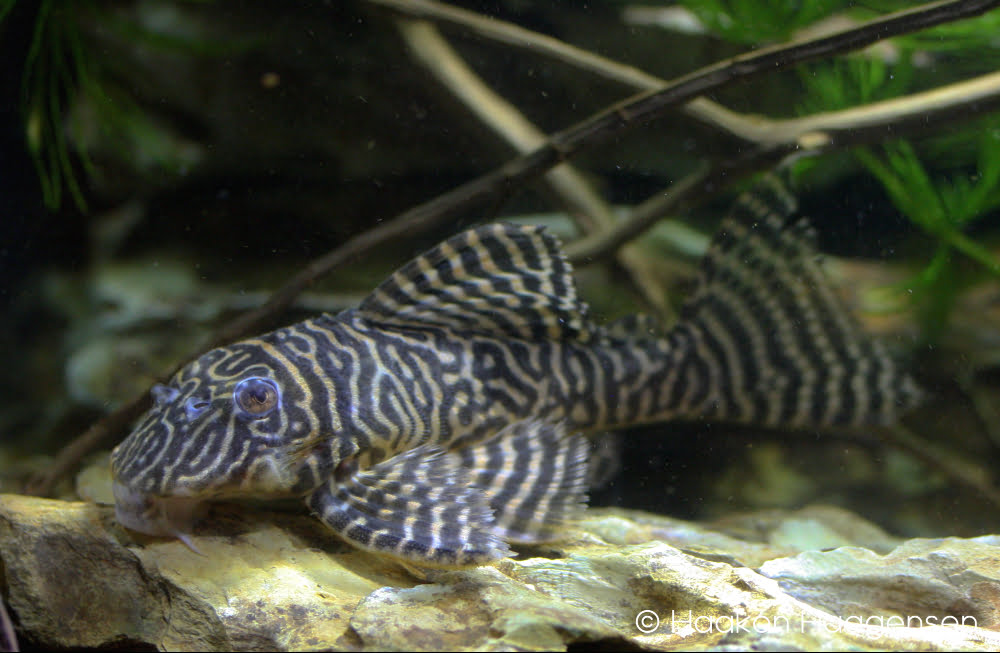
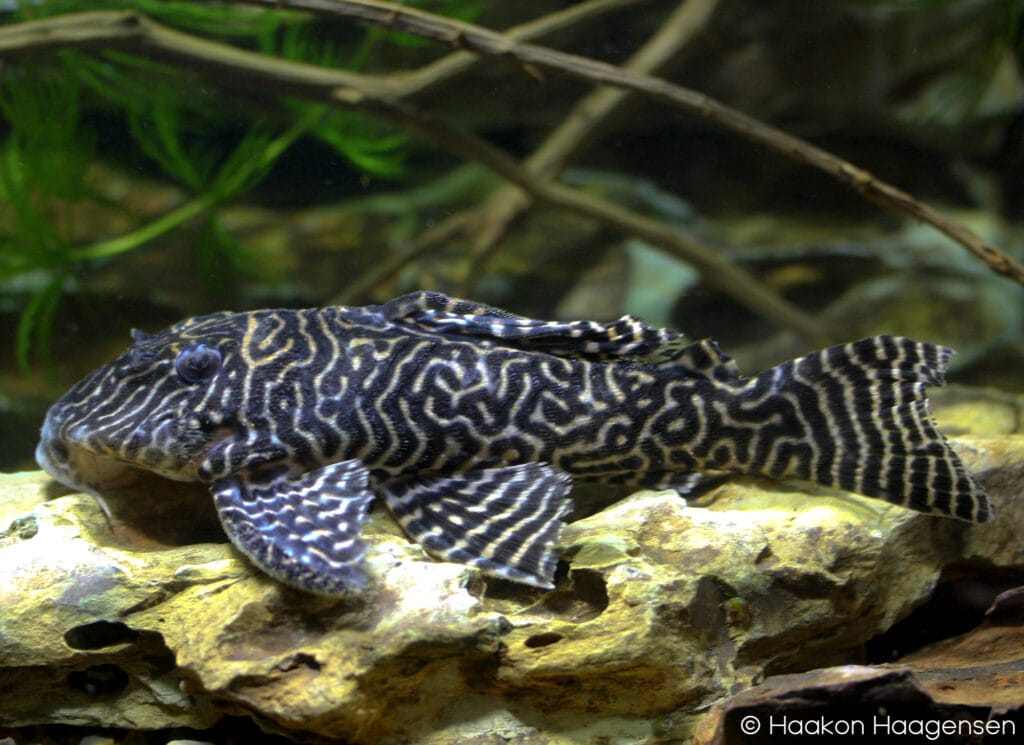

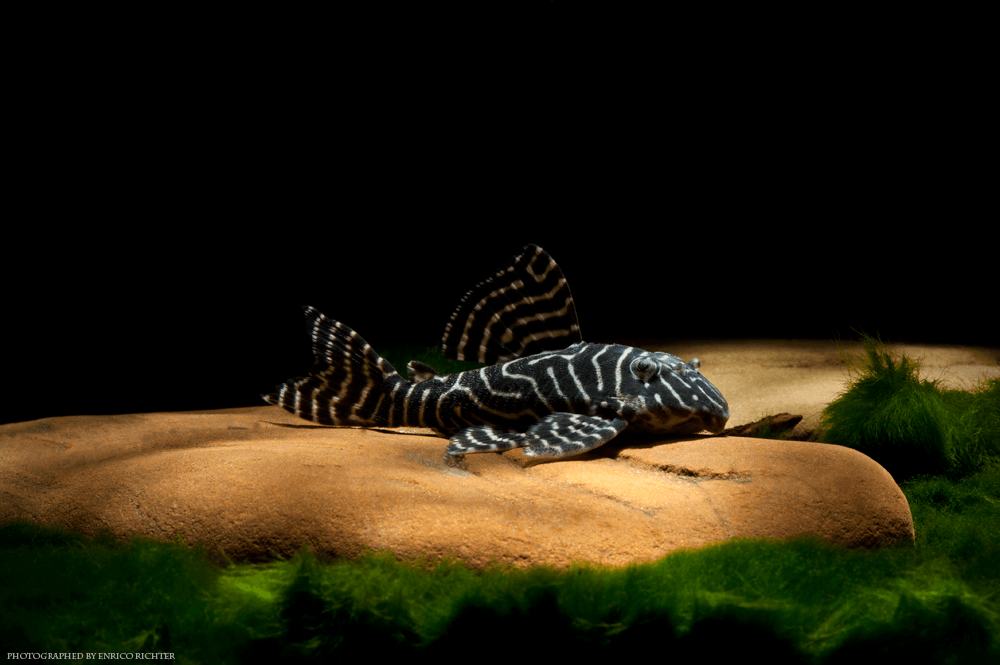
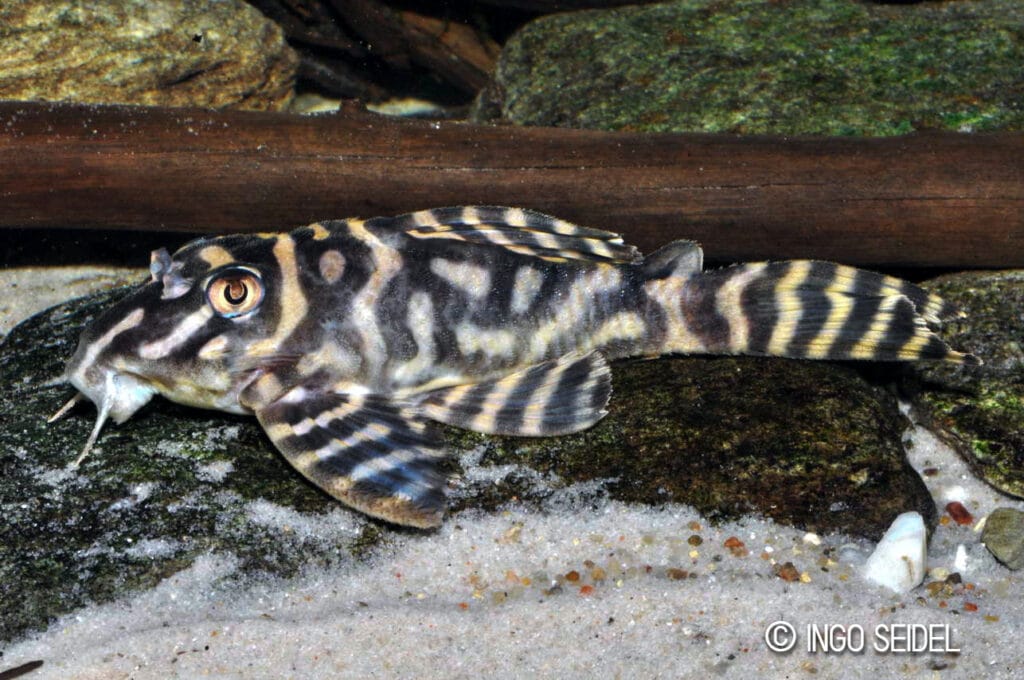

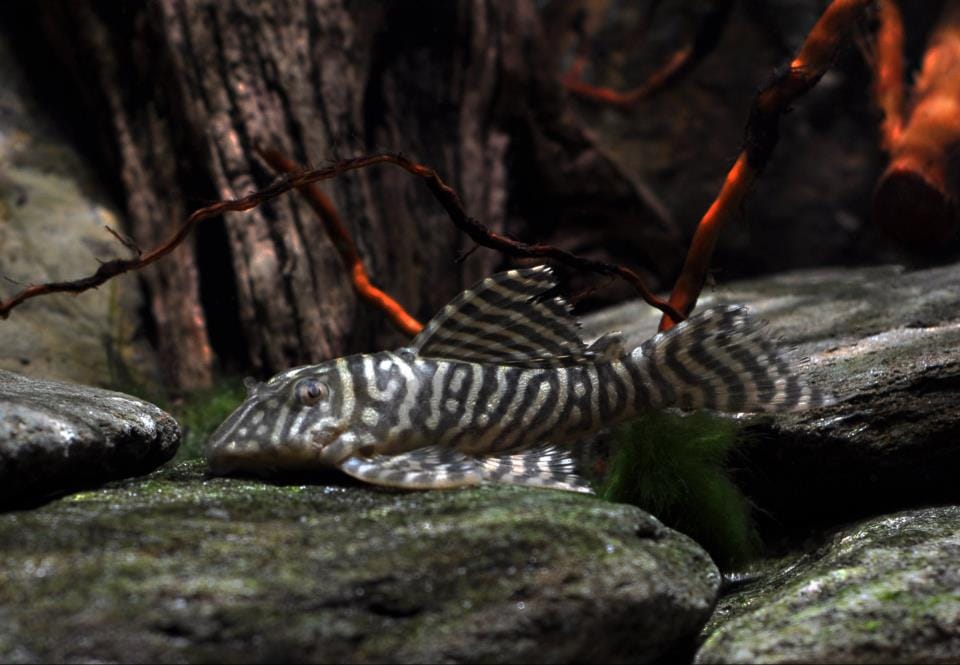
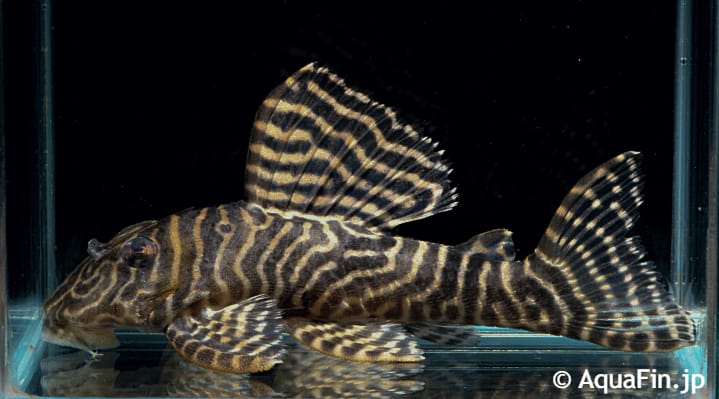
L401 is found in Rio Curuá near Alenquer, on the north side of the Amazon main channel. L401 is currently allowed for export from Brazil and is therefore slowly becoming a regular encounter in the hobby, even more so as captive bred. It’s a very hardy and beautiful species that can easily be maintained even by less experienced fishkeepers.
Facts:
Name: Hypancistrus sp.
Trade names: L401, L333 “New Alenquer”
Origin: Rio Curuá, Brazil.
Maximum size: 16 cm / 7”
L401 is very similar to L333 from Rio Xingu, and to tell them apart can be really challenging. In other words, if you are presented with captive bred strains of L401 or L333, you may have trouble telling which one it is just by looking at them. So, one must simply trust the breeder or the trader. If you compare wild specimens, L401 will appear slightly flatter in its shape, and has slightly smaller eyes than L333. These traits may just be variations because of local adaptation to their habitat. Also, most suppliers in Brazil will be able to tell you if the fish in question was collected in Rio Xingu (L333) or Rio Curua (L401). The fact that both L333 and L401 are found near the mouth of the rivers they occur in where these meets the Amazon main channel makes me believe that they are possibly different populations of the same species.
In young fish, the pattern of L401 can be very striking, with just a few, broad, black lines against a very light, golden body. Some individuals show a mutated pattern of just a few black lines. Adult specimens, males in particular, can become very grey and dull coloured with their body almost covered in odontodes.
They need an aquarium set up consisting of lots of hiding places in the form of rocks, wood and of course specially made caves that suit their measurements. In these the males will eventually guard their offspring. They prefer water that is warm (27-30 C), soft and slightly acidic. Most of all it should be well oxygenated and clean, so a good filtration system and frequent water changes are essential. Among themselves they are peaceful, although males may quarrel for caves and females can sometimes be badly injured or even killed during the breeding-trapping in the male’s cave. Males develop longer odontodes on their pectoral fins and on their cheeks and have broader heads. Hypancistrus are mostly carnivorous, so a selection of crustaceans, insect larvae and fish meat should be offered along with high quality dried foods that also contain some vegetable matter.
More info:
